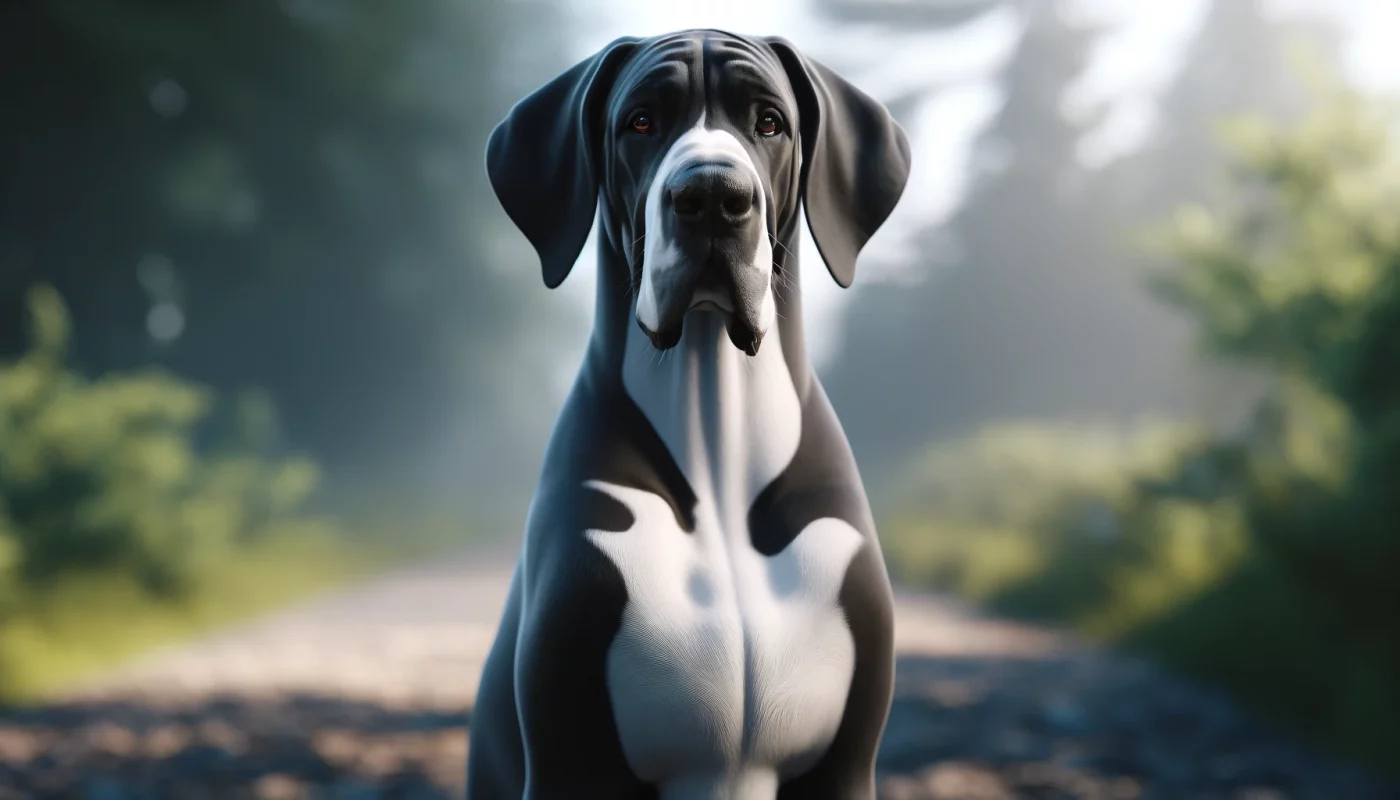Great Danes, often referred to as the “Apollo of Dogs,” are not only known for their impressive size and majestic presence but also for their varied coat colors. These gentle giants can sport a variety of colors, each following specific breed standards set by kennel clubs such as the American Kennel Club (AKC). Here, we explore the different coat colors found in Great Danes, highlighting the uniqueness and beauty of each.
1. Fawn
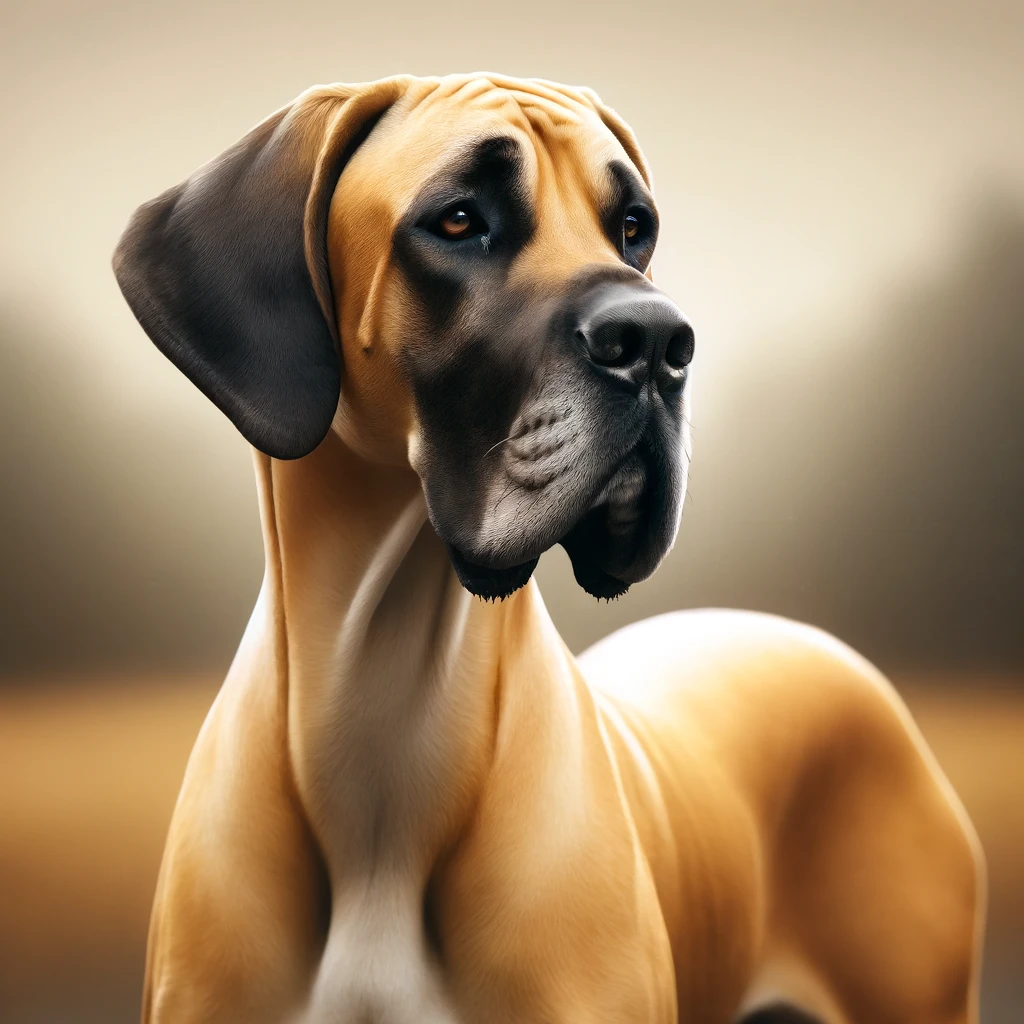
One of the most common and recognized colors in Great Danes is fawn. This color ranges from a light tan to a deep red-deer. The fawn Great Dane is golden in color with a clear black mask over the face, ears, and rims of the eyes. This color is striking, especially when complemented by the majestic build of the Dane. Black should only appear on the mask; the body should be uniformly fawn without any splotches.
2. Brindles
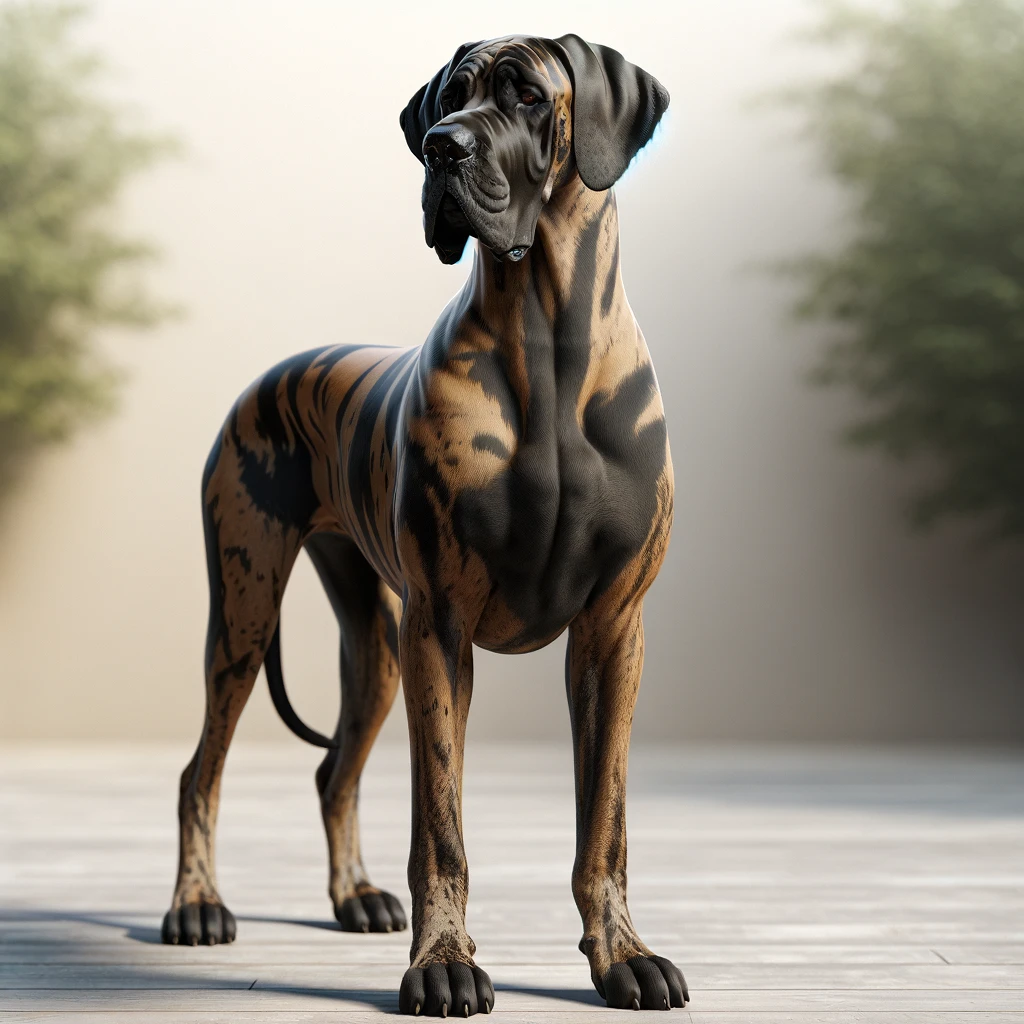
Brindle Great Danes possess a distinctive pattern that includes a fawn base coat with strong, black stripes. The stripes should be even and run parallel to each other along the body, creating a stunning tiger-stripe effect. The intensity of the base color and the contrast of the stripes may vary, but for show purposes, more specific stripes are preferred. Brindle combines warm fawn tones with the bold drama of black stripes, making these Danes stand out in any setting.
3. Blue
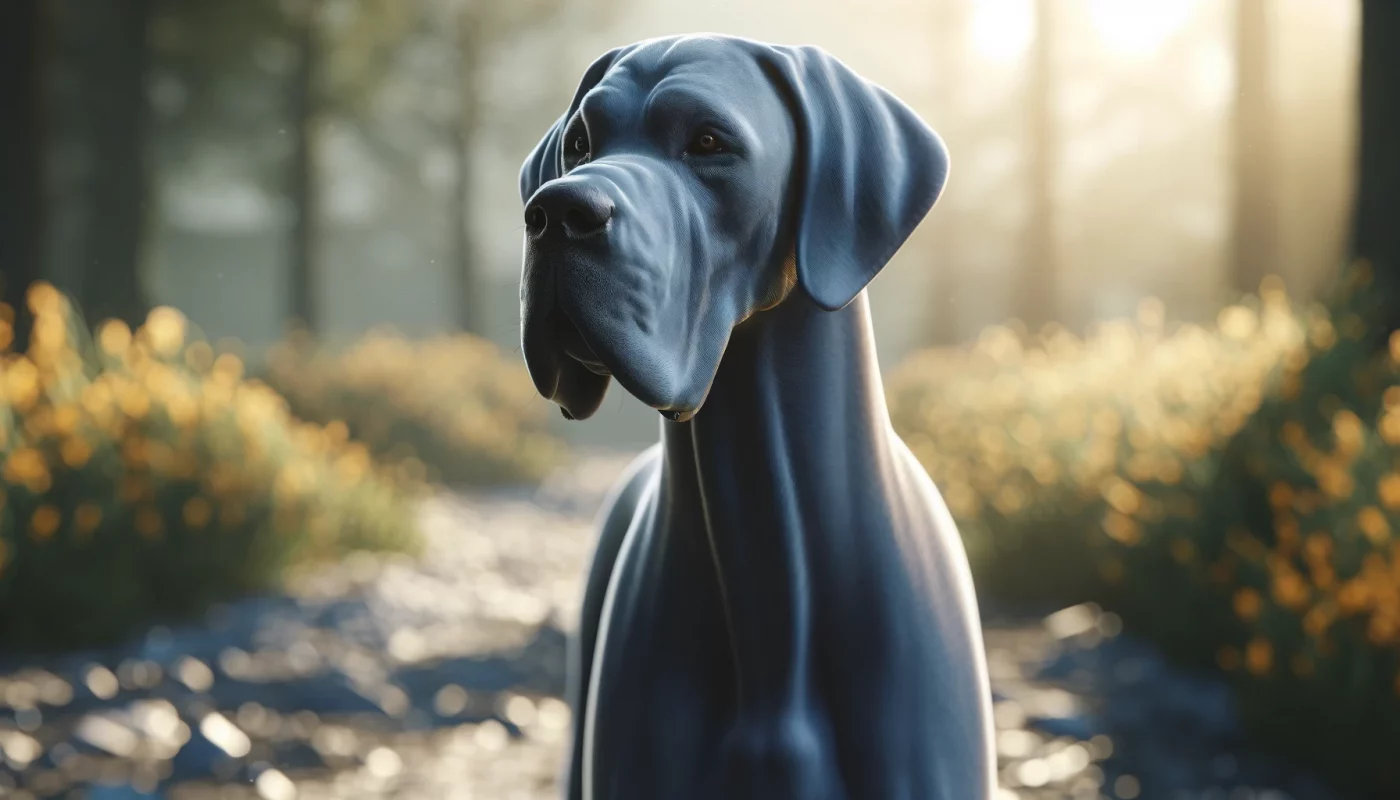
Blue Great Danes are a sight to behold with their steely blue coats. This color should be solid and uniform throughout the body. Any presence of white markings or other colors is considered a fault in show rings. The blue coat comes from a dilution gene that affects the black base color, softening it to a stunning blue. The cool beauty of this color is complemented by dark eyes that enhance the overall mystery of the breed.
4. Black
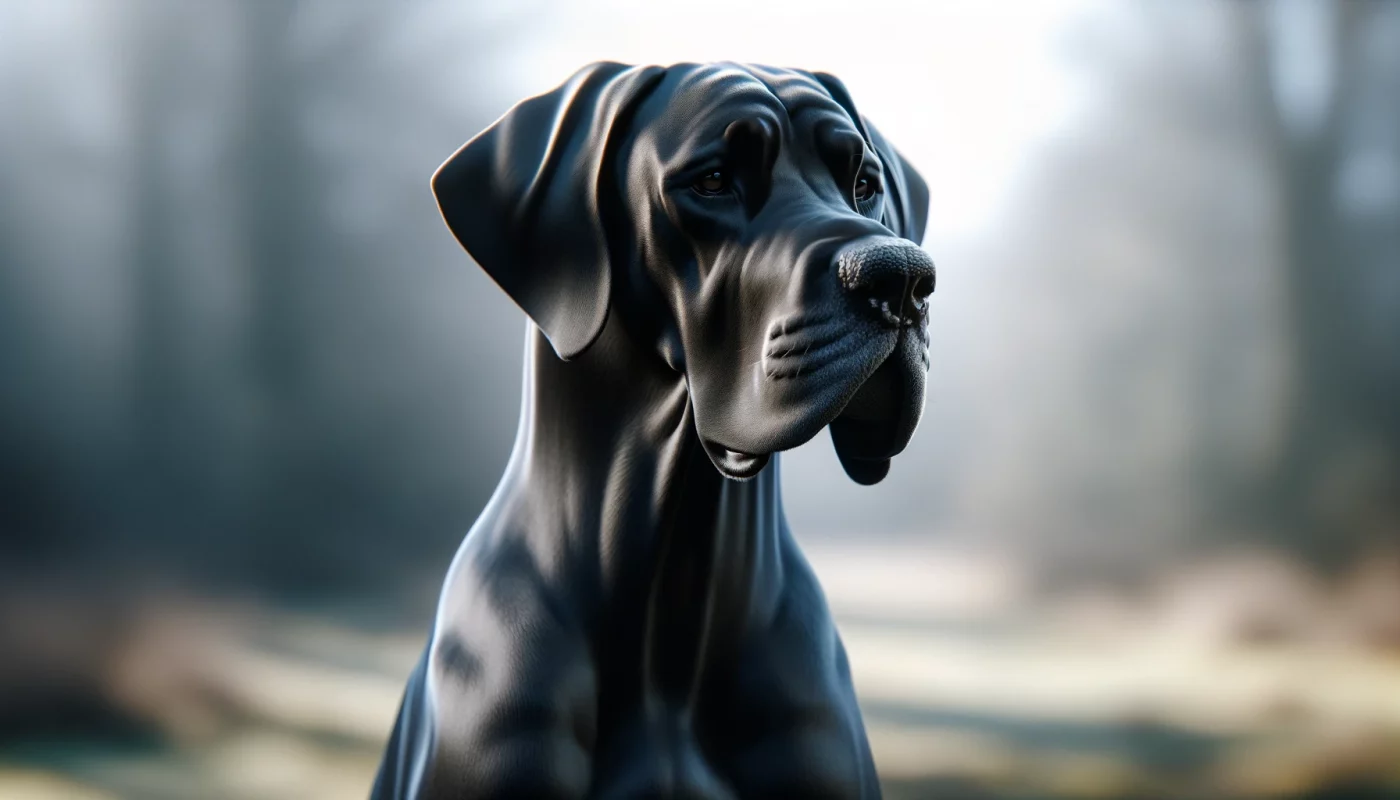
The black Great Dane boasts a jet-black coat, which should be shiny and free of any white markings or patches. This solid black coating extends from the nose to the tip of the tail and includes the paw pads. Black Great Danes are particularly striking when the sun hits their smooth, dark coats, giving them a velvety sheen. Their powerful stature and rich black color portray an imposing yet noble animal.
5. Harlequin
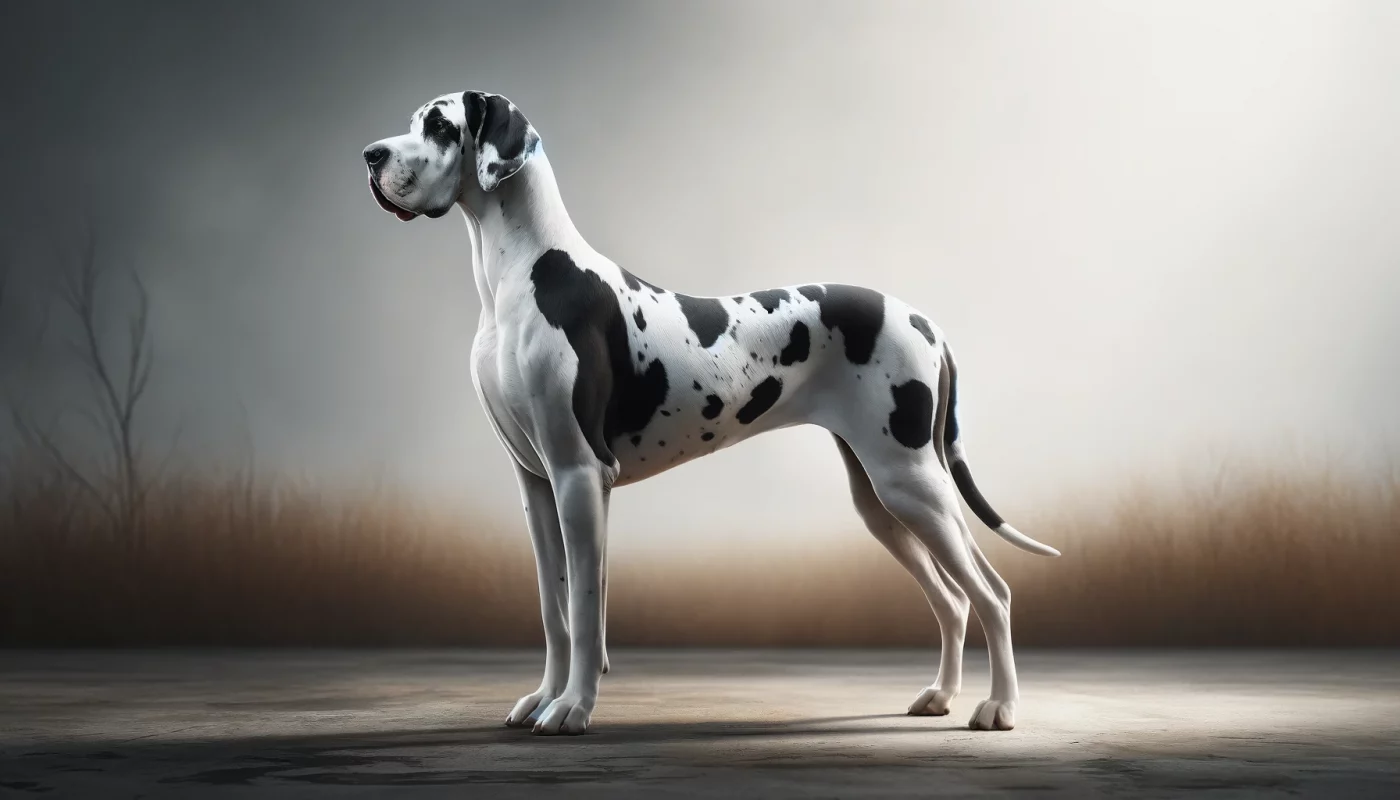
Perhaps the most distinctive of all Great Dane colors, the harlequin pattern features a pure white base with irregularly shaped black patches distributed over the body. The black patches should be well distributed and have a ragged, ragged appearance, without forming a pattern. They should cover enough of the body to be balanced but not so much that the white becomes secondary. The harlequin Great Dane is a favorite at shows because of its dramatic and striking appearance that is difficult to notice.
6. Mantle
The Great Dane mantle has a specific and attractive pattern reminiscent of an old-fashioned tuxedo. This pattern features a solid black blanket covering the body, with a white collar, chest, and partial legs, along with a white tail tip and white muzzle flare. The sharp contrast between black and white gives these Danes a noble and polished appearance, making them popular in and out of the show ring.
7. Merle
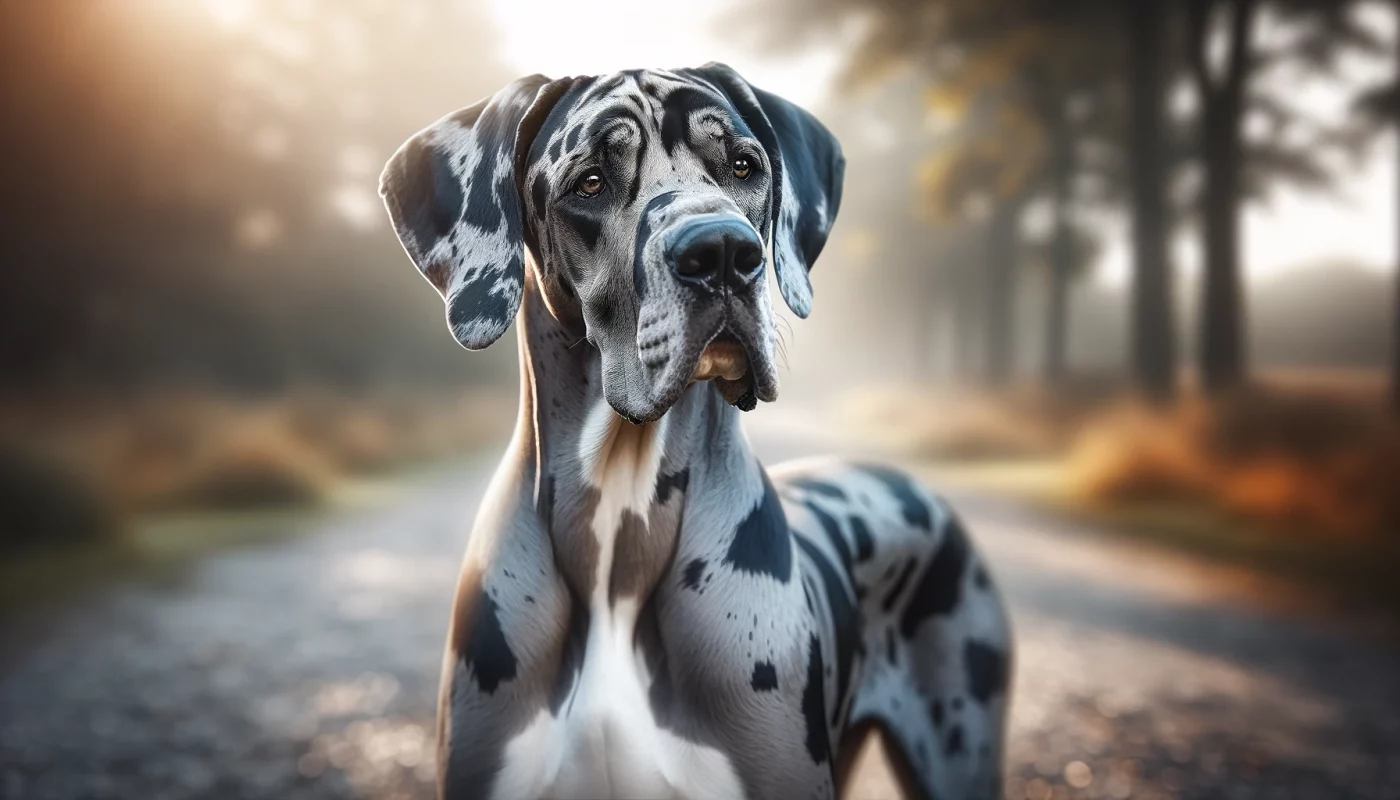
Merle Great Danes show a marbled surface with black patches set against a lighter gray or blue background. The merle pattern is complex and can vary greatly from one dog to another, with some showing large black patches while others may have a more mottled appearance. This coat color is beautiful but has significant genetic considerations, as breeding two merle Danes can lead to health issues for the offspring.
Each of these colors contributes to the majestic presence of the breed and has specific standards that must be met for show dogs. Prospective owners should familiarize themselves with the potential health issues associated with certain colors, such as blue and merle, which may be prone to skin conditions and genetic disorders.
Great Danes continue to captivate dog lovers around the world, not only with their dignified demeanor and gentle temperament but also with their diverse and colorful coat colors. Whether wearing striking brindle stripes, elegant blue, or dramatic harlequin patches, each Great Dane has a special allure that is both unique and profound. This magnificent breed, with its array of colors, stands as a true testament to the diversity and beauty found in the dog world.
Frequently Asked Questions About Great Dane Colors
- What are the typical colors for a Great Dane? Great Danes are recognized in various standard colors by the major kennel clubs. These colors include black, blue, fawn, brindle, harlequin, and mantle. Fawn denotes yellow gold with a black mask. Blue describes a solid steel-blue color. Black is a glossy jet black shade. Brindle Great Danes show a fawn or golden base with black stripes. Harlequins have a white base color with irregular black patches scattered throughout. The mantle is characterized by a black and white color similar to that of a tuxedo.
- Can Great Danes be pure white and is this color acceptable? Pure white Great Danes occur, usually due to the double merle gene, which is associated with health issues such as deafness and blindness. White Great Danes are not standard according to the major kennel clubs and the breeding of white Danes is generally discouraged due to the associated health risks.
- What causes the blue color in Great Danes? The blue color in Great Danes results from a dilution gene that affects the black pigment, turning it into a blue or gray shade. This is a genetic trait where both parents must carry the dilute gene to produce blue offspring. The specific gene responsible for this dilution is known as the D locus.
- Are there any health issues related to color in Great Danes? Certain colors, especially those produced by the merle gene (such as harlequin and merle), can be linked to genetic health issues, including hearing and vision impairments. Double merles, often resulting from the breeding of two merle Danes, are particularly at risk for serious health problems.
- What is the most unusual color of the Great Dane? Among the recognized colors, blue and harlequin patterns are rarer due to the specific genetic requirements needed to produce these colors. Unofficially, colors like fawnequin (a fawn and white pattern like harlequin) and merle are rarer but not recognized by all kennel clubs.
- How do genetics influence Great Dane colors? Great Dane coat colors are influenced by many genes that control the distribution and type of pigment. Major genes include Black (B locus), which determines the color black and chocolate, Dilution (D locus), which can mix black with blue, and Harlequin (H locus), which creates the harlequin pattern . Understanding the interaction of these genes helps breeders predict possible outcomes in their piglets.
- What is a mantle Great Dane? A mantle Great Dane has a specific coat pattern that looks like a black blanket or mantle over a white body. They often have a white collar, chest, legs, and tip of the tail, with a mostly black body. This pattern is similar to the markings on a Boston Terrier or a traditional Dalmatian.
- Can Great Danes have mixed colors in their coat? Yes, Great Danes can show mixed colors, especially in patterns like brindle or harlequin. These patterns involve a mixture of base colors and markings that are genetically prescribed and recognized as standard by kennel clubs. Color mixtures outside of these patterns, such as piebald or sable, are considered unusual.
- Does the color of a Great Dane relate to its temperament or behavior? There is no scientific evidence to suggest that the Great Dane’s color has any effect on its temperament or behavior. A dog’s temperament is influenced more by genetics, upbringing, and training than coat color.
- How should I care for my Great Dane’s coat, regardless of color? Great Dane coats, regardless of color, require regular maintenance to keep them healthy and clean. This includes weekly brushing to remove dead hair and distribute the oils on the skin, as well as periodic baths. Because of their short coat, Great Danes are relatively low maintenance in terms of grooming compared to other breeds with longer hair. However, they do fall out, and regular grooming helps manage this.



